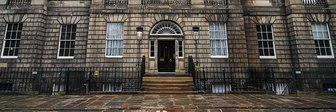Campaigners against climate change have brought key areas of central London to a halt and plan to go on doing so for at least a fortnight. Their aim is to ‘bring London to a standstill’ to make the public realise that the threat to our way of life and to the very survival of the human race is far more serious and imminent than most people imagine. And they want the government to implement radical policies to counter the threat. But their critics say they are aiming at the wrong target, that their proposals are wholly impractical and that the police should not allow protests that are so disruptive. Who’s right?
Extinction Rebellion, an international campaigning body operating in thirty-three countries, was founded as recently as last October, born of the rising alarm that neither governments nor more orthodox environmental campaigners were doing anything like enough to counter the threat most people now accept is posed by man-made global warming. The sense of urgency that sparked its creation was intensified by the fact that global carbon emissions last year were at their highest level ever. That’s in spite of decades of increasing evidence, of campaigning and of attempts to organise international action to curb emissions of the greenhouse gases that cause made-made global warming,
The campaign’s founders believe that the public has simply not woken up to the imminence of the impending catastrophe. That’s partly because the predicted effects of global warming – higher average temperatures, more extreme weather conditions, and rising sea levels, among others – have seemed both too unspecific and too distant for most people to worry about them really seriously. We pay lip service to the problem and then just carry on with our lives as though it won’t really affect us.
But according to Jem Bendell, professor of sustainability leadership at Cumbria University, and the author of a widely-read paper that has influenced the founders of Extinction Rebellion, what he calls ‘non-linear climate impacts’ mean that it is now inevitable that industrial society will collapse, probably as a result of massive harvest failures. And he sees the collapse as happening within a decade. He wrote: ‘When we contemplate this possibility, it may seem abstract … But when I say starvation, destruction, migration, disease and war, I mean in your own life. With the power down, soon you wouldn’t have water coming out of your tap. You will depend on your neighbours for food and some warmth. You will become malnourished. You won’t know whether to stay or go. You will fear being violently killed before starving to death.’
Roger Hallam, one of the co-founders of the campaign, argues there is now ‘overwhelming evidence of the demise of the human race. We’re actually speeding up towards the cliff, if we’ve not already gone over it’. His message of urgency was echoed in a parallel campaign started by the sixteen-year-old Swedish schoolgirl, Greta Thunberg, who has inspired one and a half million pupils around the world to ‘strike’ from school a day a week to protest at the failure of their parents’ and grand-parents’ generations to protect their future. She told the Davos conference of world business leaders in January: ‘I don’t want you to be hopeful. I want you to panic’.
Thee principle behind both campaigns is that of non-violent civil disobedience. In the case of London it has taken the form of ‘swarming’, of large groups of protestors occupying key areas of the city, of wheeling trees in pots on to Waterloo Bridge to stop traffic, and blocking Oxford Circus, Marble Arch and other key centres. The protests may move on to the London Underground. Similar tactics are being deployed in around eighty other cities around the world.
The action creates a seriously tricky problem for the police. As one of the organisers of the Waterloo Bridge protest, Paula Birtwistle, put it: ‘The idea is to create a dilemma by which we win either way. Either they [the police] co-operate and facilitate us or they come down heavy and arrest everybody and we get the public on our side.’ So far the police have largely been standing aside. Inspector Simon Rooke of the Metropolitan Police, said on Tuesday: ‘They can exercise their human rights to protest. We are there just to prevent crime’. By Wednesday around 300 protestors had been arrested but the blockages continued.
Many of the protestors, who represent a very wide cross-section of the population, are perfectly ready to be arrested and even charged over the campaign, so strongly do they feel about the issue. They also think that juries would be unwilling to convict them, given the cause for which they are fighting, and that any trials would add to the publicity they need.
But the campaign is not simply about raising awareness. It also has a specific policy agenda. It is demanding that the government ‘enact legally-binding policy measures to reduce carbon emissions to net zero by 2025’ and to set up citizen assemblies to help determine policy.
There are plenty of critics of Extinction Rebellion. Some fundamentally deny the case for man-made climate change. That group is growing smaller and smaller. Others share its analysis and even its sense of urgency but are uneasy about its tactics or its rationale. .
In the first place, many think its policy prescription is simply so impractical as to be not even worth floating. For Britain to cut all net carbon emissions by 2025 would involve, they claim, putting an end to all flying, scrapping 38 million petrol and diesel vehicles and disconnecting 26 million gas boilers. And all in six years. That is something so radical no government could even contemplate it. Some critics believe the protesters represent little more than a crude anti-capitalist agenda – and they argue that both capitalism and, indeed economic growth itself, are not the problem but the solution.
Their case is that capitalist-driven economic growth has produced the technologies, including renewable energy, electric cars and so on, that have already helped to mitigate the effects of global warming and stand a better chance of preventing the catastrophe the campaigners fear than shutting down the economy. The campaigners see this simply as the sort of wishful-thinking that has got us into this predicament in the first place.
Critics also say that protestors on Waterloo Bridge and elsewhere have simply got the wrong target. British governments, they argue, have actually done very well by international standards. Greenhouse gas emissions by the United Kingdom are down by 43% since 1990, even as gross national product has risen by 75%. The 2008 Climate Change Act provided a statutory target for cutting emissions by 80% of what they were in 1990 by 2050, a more ambitious goal than most other developed countries have committed themselves to.
In any case, they argue, the real problem lies elsewhere: in the United States and the fast-growing developing giants, China and India. The increase in emissions generated by increased energy production alone in these last two countries contributed more to total emissions last year than the whole of global aviation, it has been claimed. In short, the campaigners are targeting the (relative) good guys and not the real climate change culprits.
And the actual tactics of the protestors have come under attack too. Blocking roads in busy cities like London means blocking public transport, the very mode of transport the public is encouraged to use in order to minimise emissions. Sadiq Khan, the Mayor of London, said: ‘I am extremely concerned about the plans some protestors have to disrupt the London Underground. It is absolutely crucial to get more people using public transport, as well as walking and cycling, if we are to tackle this climate emergency.’
So far the reaction of the public to the disruption caused by the campaigners has been broadly tolerant. Many express solidarity with the cause and seem ready to accept some levels of personal inconvenience as a result. But this may not last and there are those who think the police should take much more effective action to end the disruption. It is one thing to defend protest and free speech, they argue, but quite another to tolerate such disruption. The life of the city must be allowed to continue and if that means the police taking a heavier line, then so be it.
Behind this stand-off lies perhaps a deeper point. Some people take the view that the campaigners are right: that the world is indeed on the edge of the cliff and the human race is in the process of committing suicide. But at the same time they take a fatalistic view as to whether anything can be done about it.
Their point is that there is no agent that can affect the necessary change. The British government itself can’t do it for the simple reason that Britain is too small. Its contribution to global-warming is too insignificant for any action it might take to have much of an effect. The fatalists point out that decades of trying to get agreement at international level (the only level at which action could be effective) have proved that it is beyond the capacity of human beings to act collectively to save us all from doom. In short: we have already reached the point where we can no longer prevent ourselves from making the planet uninhabitable for humans.
The campaigners, however, are not prepared to succumb to such extreme pessimism. The prospect facing the human race is simply too awful to do nothing. The question is whether what they are doing is justified or whether they should be stopped. What’s your view?
Let us know.
Image: Wikimedia Commons






